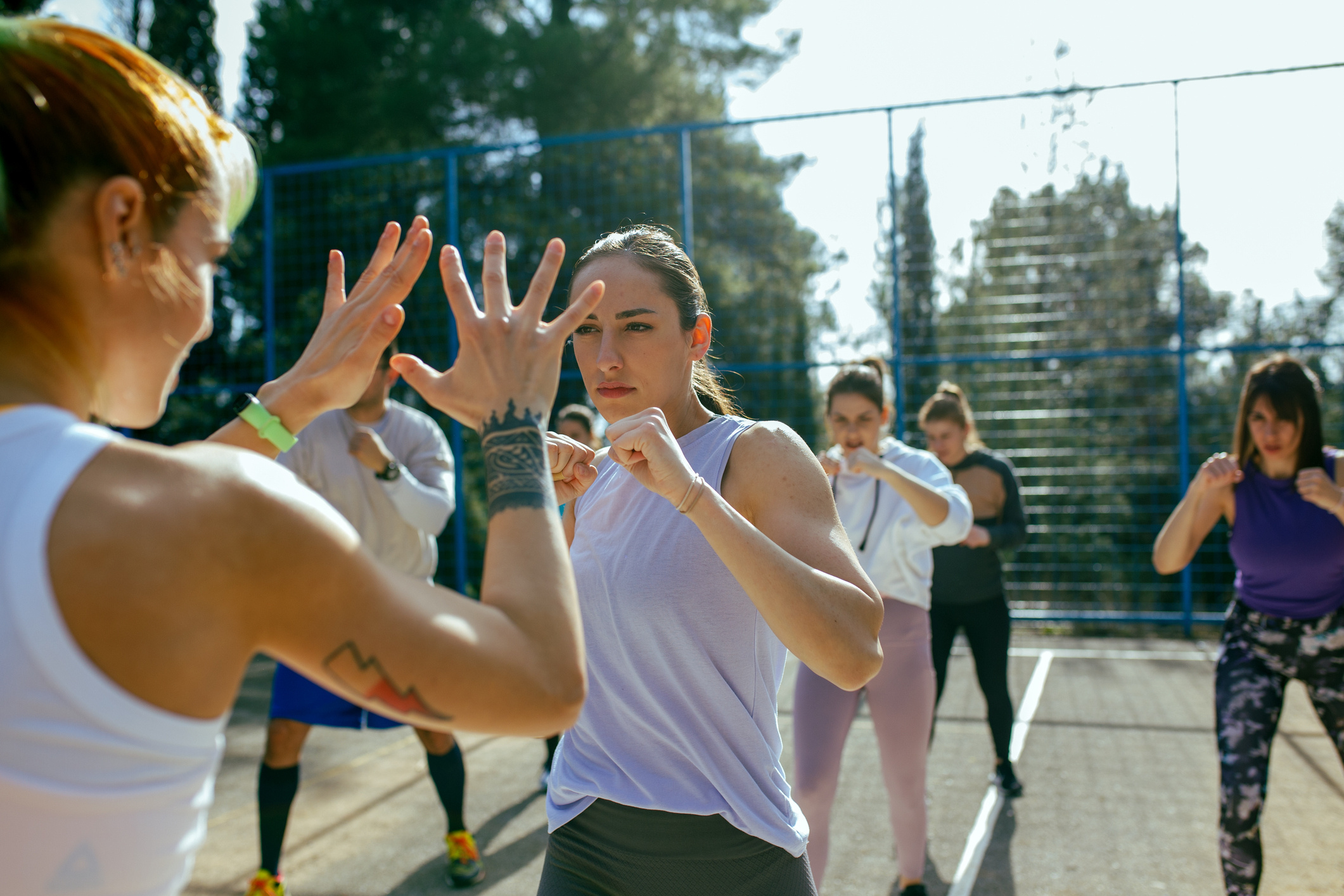Self-Defense Techniques for Women
Written by: Hilbert College • Jan 24, 2024

Self-Defense Techniques for Women ¶
Statistically, women experience more violence than any other group, but learning self-defense strategies can help women feel confident and secure. Staying aware, staying equipped and staying together can help women defend themselves and each other.
To learn more, check out the infographic below, created by Hilbert College Global’s online Master of Science in Criminal Justice Administration.

Violence Against Women: Statistics ¶
While someone close to the victim commits most physical and sexual crimes, unknown assailants also target women.
Daily Dangers ¶
A total of 1 in 5 women experience rape or attempted rape during their lifetime. According to the World Health Organization, 30% of women aged 15 and older have experienced physical and/or sexual violence worldwide. That’s approximately 736 million women.
A total of 19.1 million women in the U.S. have been stalked. Pregnant and postpartum women are 35% more at risk of homicide. In 2019, 25.9% of women in undergraduate programs experienced nonconsensual sexual contact “by force or inability to consent,” according to the Association of American Universities.
People You Know ¶
About 1 in 5 women experience sexual violence during their lifetime, and about 1 in 3 women experience physical violence by an intimate partner. Intimate partners and former intimate partners account for 66.2% of stalking cases with female victims. In fact, the Centers for Disease Control and Prevention reports that 14% of women have experienced stalking by an intimate partner, and 50% of female victims of murder are killed by intimate partners. On average, 70 women are shot by an intimate partner every month.
5 Powerful Self-Defense Techniques for Women ¶
While no one is ever to blame for being targeted for violence, women need to know how to protect themselves.
Know the Human Body ¶
Familiarize yourself with the weak points of the human body. These include the eyes, nose and throat. Other weak points include the solar plexus, groin and knees.
Learn Basic Moves ¶
For a palm heel strike, smash the heel of your hand into the attacker’s nose. For an eye strike, drive your fingers toward the eyes to make the attacker recoil. For a knee strike, hit the stomach or groin to make the attacker double over or back off. For an elbow jab, hit the chin, temple, back of the head or chest.
Drop Low ¶
If someone grabs you from behind, try dropping your center of gravity. This may throw the attacker off-balance, allowing you to land another blow or run away.
Use Your Head ¶
Hitting the attacker’s nose with your forehead or throwing your head back into theirs can cause them to let go.
Arm Yourself ¶
If you don’t feel confident enough to fight with your bare hands, carrying pepper spray, a whistle, or something small and sharp can help you defend yourself. Please note that some self-defense weapons, such as pocket knives, may be illegal in your state. You should check your state’s laws to see which are prohibited.
Key Tips for Prevention and Safety ¶
Beyond learning self-defense techniques, staying aware and prepared can help people stay safe.
Situational Awareness ¶
Attackers like to lurk in dark places, empty streets or crowded rooms to catch victims off guard. Taking in your surroundings and choosing well-lit paths can deter an attacker from targeting you or give you a chance to call out for help before an attacker can stop you.
Recognize Lures ¶
Attackers can use tricks to lure you away from those who can help you. Never travel to a secondary location or get in a car with someone you’re unsure about. If someone is insistently asking for help or seems to be making up a fake emergency, try to lead them to other people instead of helping them alone.
Trust Your Instincts ¶
If someone is giving you bad vibes or makes you uncomfortable, stay away. Reach out to a trusted person to talk, ask for help getting home or assess the situation. Sometimes your gut knows things before you do.
Power in Numbers ¶
Attackers are opportunity offenders, so staying close to your group or talking with others deters them from striking. Don’t walk home alone at night, don’t separate from your group and don’t go to unfamiliar places alone. If someone does attack you, you’ll have people around you to help.
Tools for Self-Protection ¶
Beyond learning self-defense moves and staying in well-lit areas, some tools are available that can help you protect yourself.
Alarm Key Chains ¶
Alarm key chains are small but loud. They emit high-pitched noises that scare off attackers and draw attention from bystanders. Usually, a button or pull cord activates them.
Pointed Rings ¶
Pointed rings are rings that either look like everyday jewelry or hang from a key chain for emergencies. They have a sharp point that can be jabbed into an attacker.
Flashlights ¶
Flashlights vary in size from small enough to fit on a key chain to large enough to serve as a weapon themselves. They can help in emergencies or deter attackers. In addition to their self-defense uses, flashlights can be helpful in day-to-day life.
Pepper Spray ¶
It’s nonlethal but packs a punch. Pepper spray usually comes in small, lightweight canisters that can be stored on key chains, in a pocket, or in a bag. It’s a good weapon to use from a distance.
Stun Guns ¶
Stun guns shock attackers and can be used in long- or short-range situations. They’re also loud, and they can scare off anyone who doesn’t want to risk getting tased. Stun guns can be disguised as everyday objects, such as a smartphone or lipstick.
Stay Safe ¶
Several ways are available for women to defend themselves, and learning self-defense is important. Women can feel confident while out and at home by arming themselves with knowledge about self-defense and with defensive tools.
Centers for Disease Control and Prevention, Fast Facts: Preventing Intimate Partner Violence
CPI, Self Defense for Women: 10 Techniques to Know
Defender Ring, 10 Best Self Defense Weapons for Women in 2023
Everytown Research & Policy, Guns and Violence Against Women
Girls Who Fight, “10 Self Defense Strategies Every Woman Needs to Know”
National Coalition Against Domestic Violence, Domestic Violence
World Health Organization, Violence Against Women: Prevalence Estimates, 2018


